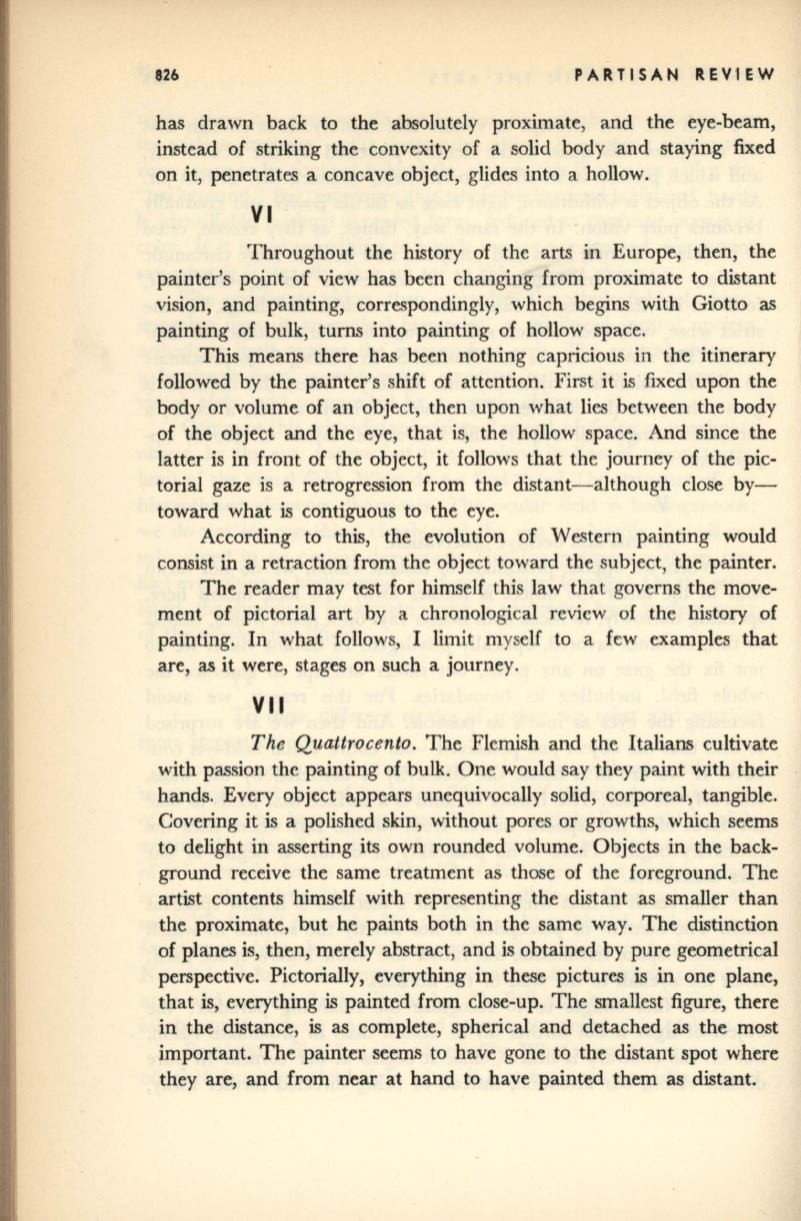
826
PARTISAN REVIEW
has drawn back to the absolutely proximate, and the eye-beam,
instead of striking the convexity of a solid body ,and staying fixed
on it, penetrates a concave object, glides into a hollow.
VI
Throughout the history of the arts in Europe, then, the
painter's point of view has been changing from proximate to distant
vision, and painting, correspondingly, which begins with Giotto as
painting of bulk, turns into painting of hollow space.
This means there has been nothing capricious in the itinerary
followed by the painter's shift of attention. First
it
is fixed upon the
body or volume of an object, then upon what lies between the body
of the object and the eye, that is, the hollow space. And since the
latter is in front of the object, it follows that the journey of the pic–
torial gaze is a retrogression from the distant-although close by–
toward what is contiguous to the eye.
According to this, the evolution of Western painting would
consist in a retraction from the object toward the subject, the painter.
The reader may test for himself this law that governs the move–
ment of pictorial art by a chronological review of the history of
painting. In what follows, I limit myself to a few examples that
are, as it were, stages on such a journey.
VII
The Quattrocento.
The Flemish and the Italians cultivate
with passion the painting of bulk. One would say they paint with their
hands. Every object appears unequivocally solid, corporeal, tangible.
Covering it is a polished skin, without pores or growths, which seems
to delight in asserting its own rounded volume. Objects in the back–
ground receive the same treatment as those of the foreground. The
artist contents himself with representing the distant ,as smaller than
the proximate, but he paints both in the same way. The distinction
of planes is, then, merely abstract, and is obtained by pure geometrical
perspective. Pictorially, everything in these pictures is
in
one plane,
that is, everything is painted from close-up. The smallest figure, there
in the distance, is as complete, spherical and detached as the most
important. The painter seems to have gone to the distant spot where
they are, and from near at hand to have painted them as distant.


